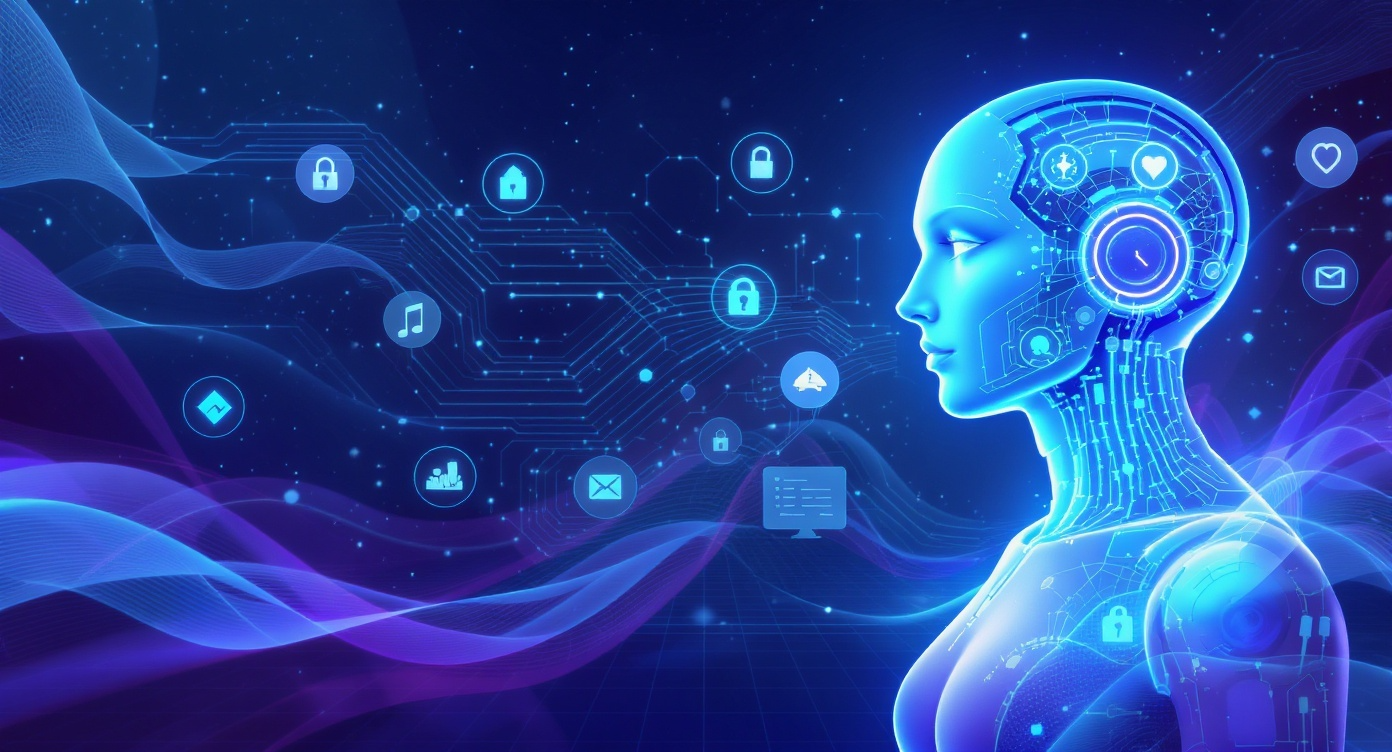

Building AI That Learns Your Preferences
Most AI assistants today are like having a conversation with someone who has complete amnesia. They might be helpful in the moment, but they forget everything the instant you close the chat. Every interaction starts from scratch, forcing you to repeatedly explain your preferences, context, and needs.
At SageVibe, we're building something fundamentally different: AI companions that actually remember and learn from your real experiences. But here's the crucial part — they do this while keeping you in complete control of your data and how it's used.
The SageVibe Approach: Persistent Personal Knowledge
Our companions build a comprehensive, persistent understanding of who you are, what you like, and how you live your life. The purpose is to create genuinely personalized AI that gets better at helping you over time.
How It Works: The Knowledge Base System
Each SageVibe companion maintains a personal knowledge base that's uniquely yours and shared across all your companions. Think of it as an intelligent, searchable memory that captures and organizes your experiences, preferences, and insights over time.
Whether you're talking to your Foodie Guru Companion about restaurant preferences or your History Keeper Companion about travel memories, they're all working with the same unified understanding of you.
Real Example: Foodie Guru in Action
How your companion learns and helps you dine better
Step 1: Capture Your Experience
You visit Tony's Italian Kitchen for dinner. After your meal, Foodie Guru detects you're at a restaurant and prompts: "Hey! Mind snapping a pic of your receipt?" You upload the receipt, and our OCR extracts every item: Burrata appetizer, Carbonara pasta, Tiramisu, and a glass of Chianti.
Step 2: Learn Your Preferences
Later, Foodie Guru asks: "How was that carbonara at Tony's?" You respond that the carbonara was amazing but the tiramisu was too sweet. This creates structured knowledge entries in your personal knowledge base, organized under rubrics like "Favorite Dishes" and "Italian Restaurant Preferences."
Step 3: Smart Recommendations
Three months later, you're near Tony's again. Foodie Guru sends a notification: "Tony's Italian Kitchen is nearby! Last time you loved their carbonara. They're open until 10pm and have reservations available." When you visit a new Italian restaurant, your companion knows to suggest carbonara-style dishes and skip overly sweet desserts.
Technical Architecture: How We Store Your Memories
1Knowledge Rubrics: Organizing Your World
Every piece of information about you is organized into "knowledge rubrics" — thematic categories that make sense for your life. Each rubric has a name, description, and tracks which sources contributed to it.
class KnowledgeRubric:
id: int
knowledge_base_id: int
name: str # e.g., "Favorite Cuisines", "Date Night Spots"
description: str
source: str # JSON: ["gmail", "chat", "manual_entry"]
is_starred: bool
last_entry_updated_at: datetimeYour Foodie Guru might have rubrics like "Favorite Cuisines," "Dietary Restrictions," "Date Night Restaurants," or "Dishes to Avoid." Your History Keeper organizes memories by "Travel Experiences," "Work Projects," or "Family Milestones."
2Knowledge Entries: Capturing Real Experiences
Within each rubric, individual knowledge entries capture specific experiences, preferences, or insights. Every entry includes rich metadata about its origin and can connect to multiple rubrics.
class KnowledgeEntry:
id: int
knowledge_base_id: int
title: str
content: str # Structured JSON
source: str # JSON: ["gmail", "receipt_photo"]
created_at: datetime
updated_at: datetime
rubrics: List[KnowledgeRubric] # Many-to-many
attachments: List[KnowledgeEntryAttachment]
references: List[KnowledgeEntryReference]3Attachments & References: Rich Context
Knowledge entries can have attachments (receipt images, photos, documents) and references to other entries or external sources, creating a rich web of interconnected memories.
Attachments
Receipt photos, menu PDFs, restaurant photos — all preserved with their original context and searchable content.
References
Link to related memories, Google Maps locations, reservation confirmations, or other knowledge entries.
Learning from Multiple Sources
Your companions learn about you from multiple sources, always with your explicit permission and control:
Email Integration
Forward DoorDash receipts, OpenTable confirmations, or Grubhub orders. Your companions extract restaurant names, dishes ordered, prices, and dates automatically.
Photos & Receipts
Snap pictures of receipts, menus, or dishes. OCR extracts item names, prices, and details. Rate items later to build preference profiles.
Natural Conversations
Tell your companions about experiences naturally. They extract and structure relevant information: "The sushi at Masa was incredible, best omakase I've ever had."
Google Maps Timeline
Connect your Google Maps Timeline to automatically track visited restaurants and build a comprehensive dining history over time.
Manual Entries
Add information directly when you want to ensure your companion knows something specific: dietary restrictions, allergies, or favorite ingredients.
API Integrations
Connect DoorDash, UberEats, or other delivery services. Automatically sync order history to learn your takeout preferences and frequency.
Your Data, Your Rules: Privacy by Design
Building AI that learns your preferences raises important questions about privacy and control. We've designed SageVibe from the ground up with these principles:
Complete Transparency
See exactly what your companions know about you. Every piece of information is visible, editable, and deletable. View source attributions for every fact.
No Data Sharing
Your personal knowledge base is never shared or sold. It exists solely to serve you. We don't train models on your private data.
Granular Control
Control what sources your companions can access, what they remember, and how they use information. Disconnect any source anytime.
The "Dismissed Knowledge" System
We built a parallel "dismissed knowledge" system — so that deleted information stays deleted. When you delete or dismiss information, it's moved to a separate database table that your companions actively check against.
How It Works:
- You dismiss a knowledge entry (e.g., "I no longer like spicy food")
- Entry moves to
dismissed_knowledge_entries - Before creating new knowledge, companions check dismissed entries
- System prevents re-learning information you've explicitly rejected
This ensures your companions don't re-learn things you've explicitly told them to forget — even if the same information appears in multiple sources.
The Future of Personal AI
We're starting with Foodie Guru because food is universal, personal, and generates frequent interactions. But the knowledge base architecture we've built is designed to scale across every aspect of your life.
Entertainment Concierge
Learn your taste in movies, shows, music, and events. Get personalized recommendations that actually match your preferences.
History Keeper
Organize emails, documents, and memories into a searchable timeline. Never forget important moments or lose track of information.
Imagine AI companions that truly know you, learn from every interaction, and get better at helping you every single day — all while keeping you in complete control of your data.
That's what we're building at SageVibe.